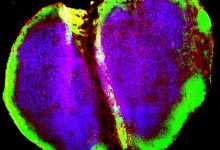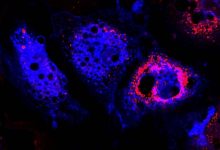
What’s new
A new research led by researchers of Standford university revealed that gene therapy can be effective without any side effects like autoimmunity problem which is common in gene therapy.
Gene therapy is at the edge of becoming a mainstream approach for treating single-gene disorders,” said Lawrence Steinman, MD, professor of neurology and neurological sciences and of pediatrics at Stanford. “But there’s a catch: If you give a gene that’s a recipe for a normal protein to someone with a faulty version of the gene, whose body never made the normal protein before, that person’s immune system will mount a reaction — in some cases, a lethal one — to the normal protein, just as it would to any foreign protein. We think we’ve solved that problem.”
Muscular dystrophy and gene therapy?
The most common type of dystrophy is Duchenne muscular dystrophy which is caused by the defect in a single gene. Hence scientist found this disease as an excellent candidate for gene therapy. A muscular dystrophy is a group of muscle diseases causing weakness increasing over time as well as loss of muscle mass. It is generally caused due to a defect in a protein called dystrophin.
Problem faced during the experiment
During their research, the main focus of the gene therapy was to deliver the correct copy of gene dystrophin into the mice. For that purpose, they used an engineered virus for drug delivery but the problem was the dystrophin gene was too large for gene hauling process. Fortunately, researchers found that only a functional version of dystrophin called microdystrophin can be used for gene transfer instead of the whole genome.
The next step was to overcome autoimmunity i.e. immune response to gene therapy. Hence, they co-opted for plasmid as a gene delivery vehicle. The particular bacterial plasmid co-opted ordinarily contains several sequences that can be recognized by the immune system which in turn mounts a strong response.
But some years ago, Steinman and a few other Stanford scientists figured out how to replace those troublesome DNA motifs to avoid the immune response. This immune-tolerance-inducing plasmid has been deployed in clinical trials for two different autoimmune conditions, with promising results.
During their research, the researchers used viral delivery of the microdystrophin gene to deliver gene therapy, followed by the plasmid-assisted induction of tolerance to microdystrophin protection against autoimmunity to the mice.
What did they do in their study
In the laboratory, they used 15 6-week old mouse was bioengineered to lack functioning dystrophin were injected with the virus carrying microdystrophin. After one week they were dived into three groups and given weekly injections for 32 weeks of either a dummy solution; the dummy solution plus the tolerance-inducing plasmid absent the microdystrophin gene; or the plasmid with the microdystrophin gene.
Result
At the end of the 32-week period, they observed that mice with microdystrophin-loaded plasmid had significantly greater muscular strength and substantially more dystrophin-producing muscle fibers. They had lower levels of key bloodborne signaling chemicals that carry inflammatory messages between immune cells, and they had weakened antibody responses to normally immunogenic portions of microdystrophin.
“It’s still early days here — this was, after all, a mouse experiment — but it seems we can induce tolerance to a wide assortment of formerly immunogenic proteins by inserting the gene for the protein of interest into the plasmid,” Steinman said. “We’ve seen this with the insulin precursor, in people who have Type 1 diabetes, and with myelin, in people who have multiple sclerosis. It now looks as if the concept may hold for gene therapy, too.”






